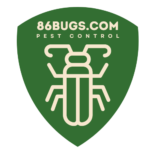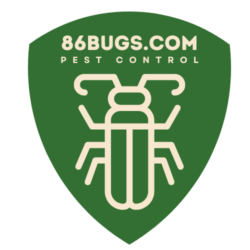Avian Nuisance Mitigation
Grackles
Keep Grackles away with bird deterrents from 86Bugs. They are effective, easy to use and humane to birds and other animals.
Grackles often invade fields and parks in huge destructive flocks. They will drive out other species and “take over” an area, creating excessive noise, leave damaging and disease-carrying bird droppings in their wake. Grackles live year-round in the southeastern U.S., especially in Texas and Florida, migrating to surrounding northern areas to breed in the summer months.
Information About Grackles
Highly independent, intelligent and stubborn, grackles are about 12 inches long and weigh about 4 ounces. Common grackles roost in large communal flocks, numbering in the thousands and sometimes in the millions of birds. They eat insects, crayfish, minnows, frogs, lizards, berries, seeds, waste grain and acorns. They are commonly found near agricultural fields and feedlots, suburbs, city parks, cemeteries, pine plantations and hedgerows.
Grackle Identification
Grackles are part of the Icteridae family, which includes other blackbirds, orioles, and meadowlarks. Key characteristics of grackles include:
- Size and Shape: Grackles are larger than most blackbirds, with a robust body, long tail, and stout bill.
- Plumage: They have glossy black feathers that can appear iridescent blue, purple, or green in sunlight.
- Eyes: Their eyes are bright yellow or white, giving them a striking appearance.
- Calls: Grackles produce a variety of harsh, grating calls and whistles.
Grackle Habitat and Distribution
Grackles are highly adaptable and can be found in various habitats, including:
- Urban Areas: Parks, gardens, and city streets.
- Suburban Areas: Lawns, golf courses, and shopping centers.
- Rural Areas: Farmlands, pastures, and wooded areas near water.
They are widespread across North America, from southern Canada through the United States to Mexico and Central America.
Behavior and Diet
Grackles are opportunistic feeders with a diverse diet that includes:
- Insects: Beetles, grasshoppers, and caterpillars.
- Fruits and Seeds: Berries, grains, and nuts.
- Small Animals: Frogs, lizards, and even small birds.
Grackles are known for their:
- Foraging Behavior: They often forage on the ground in large groups.
- Aggressiveness: Grackles can be aggressive toward other birds and animals, often dominating feeding areas.
- Roosting Habits: They gather in large communal roosts, which can number in the thousands.
Problems Caused by Grackles
While grackles play a role in the ecosystem, they can cause several problems, including:
- Crop Damage: Grackles can cause significant damage to crops like corn and rice.
- Nuisance Issues: Their loud calls and large roosts can be disruptive in residential areas.
- Health Concerns: Large flocks can lead to the accumulation of droppings, which can harbor diseases.

Why Grackle Control?
Grackle birds pose a major problem for property owners. They eat ripening corn as well as corn sprouts, foraging in large flocks to become a costly nuisance to growers. They pose a greater threat to cornfields than crows, causing millions of dollars in crop losses annually. They are also attracted to any food source, including garbage, which means they can carry germs and disease. Due to their alarmingly large flocks, the birds produce huge amounts of waste, corroding paint, metal and other surfaces. The weekly cleanup costs can be very extensive. Care must be exercised, even when cleaning dried grackle droppings, as the dust can still release airborne bacteria that can be inhaled and cause respiratory problems.
How to Get Rid of Grackles
There are several humane options for deterring grackles from landing or nesting on your property. It’s important to thoroughly clean up any bird droppings or nesting materials before any deterrent products are installed (grackles are attracted to the scent of their droppings and nests). Here are a few steps you can take to get rid of grackles:
- Block them from rafters or beams with Bird Netting or Bird Slopes
- Remove dead or dying trees from your property that double as grackle roosts.
Remove Food Sources
- Grackle birds are ground foragers that eat anything from seeds and fruit to invertebrates and fish.
- Grackles may be attracted to your garden, lawn area or song bird feeders as a food source. Remove feeders to limit this attraction.
- Remove leftover food on the floor and tables of open-air eateries. • Tightly close all trash containers.
- Discourage the feeding of grackles by children or employees.
Grackle Scare Tactics
Grackles are quick and alert to any perceived threats, so scare tactics can be highly effective.
- Hang visual deterrents in trees and problem structures that attract grackles. These deterrents include Hawk Decoys, Predator Eye Balloons, Reflective Eye Diverters or shiny reflective objects.
- Deter or disperse grackles from trees by using the Bird Chase Super Sonic noise maker, a weatherproof sound deterrent designed for large open spaces.















